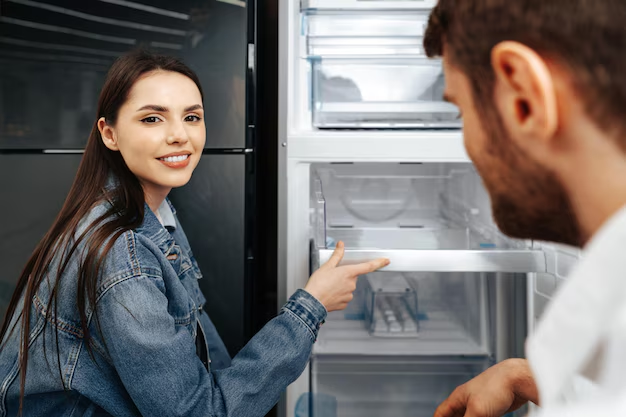Optimizing Your LG Refrigerator: Mastering Temperature Settings
Finding the perfect balance for your LG refrigerator's temperature can enhance food preservation and energy efficiency. If you're unsure how to adjust these settings, you’re certainly not alone. In this guide, we will explore step-by-step instructions on how to change the temperature settings on an LG refrigerator, delve into why it matters, and discuss related tips for kitchen appliance maintenance.
Understanding LG Refrigerator Temperature Settings
Why Temperature Matters
The temperature setting on a refrigerator is crucial for keeping food fresh. A temperature that's too high may lead to spoiled food, while a setting that's too low can freeze and damage your grocery items. The recommended refrigerator temperature is usually between 37°F (3°C) and 40°F (4°C), while freezers should be set to 0°F (-18°C).
The Role of Sensors and Thermostats
Modern LG refrigerators are equipped with advanced sensors and thermostats that help maintain consistent temperatures. These systems automatically adjust the cooling cycle based on real-time data, ensuring optimal performance and energy efficiency.
How to Change the Temperature on Your LG Refrigerator
Step-by-Step Guide
🌀 Locating the Temperature Control Panel:
- Identify the Model: Before proceeding, check your refrigerator’s model number. Temperature control access can vary depending on the model.
- Find the Control Panel: In most LG refrigerators, the control panel is located inside the fridge, often towards the top. In models with external panels, controls can be found on the front door.
🌡️ Adjusting the Temperature:
- Access the Control Settings: Open the door to locate the control panel.
- Adjust Settings: Most panels have '+/-' buttons or digital interfaces to select the desired temperature.
- Wait for Adjustment: After setting, allow the refrigerator to stabilize, which might take a few hours.
📋 Key Takeaways:
- Use the Correct Buttons: Always refer to your user manual to ensure proper button usage.
- Wait and Monitor: Adjustments may take a few hours to stabilize. Regularly monitor changes.
⚠️ Important Considerations:
- Avoid Frequent Adjustments: Constant changes can overwork your refrigerator's compressor.
- Keep Vents Clear: Ensure nothing is blocking the vents inside the fridge for effective air circulation.
Related Temperature & Settings Subtopics
Maintaining Optimal Performance
❄️ Combatting Frost Build-Up:
- Regular Defrosting: Keep an eye on frost accumulation, especially in freezer compartments. Excessive frost can impact temperature consistency.
- Proper Storage Techniques: Store food items in airtight containers to prevent frost accumulation.
🛠️ Routine Maintenance:
- Check Seal Integrity: Regularly inspect door seals to prevent cold air leakage.
- Change Air Filters: If your model has an air filter, changing it every six months optimizes cooling efficiency.
Energy Efficiency Tips
💡 Smart Usage Practices:
- Keep Fridge Full: A fuller fridge maintains cool temperatures better than an empty one, but avoid overcrowding to allow proper air circulation.
- Place in Cool Spaces: Positioning your refrigerator away from heat sources contributes to better energy efficiency.
♻️ Eco-Friendly Adjustments:
- Nighttime Temperature Spike: If your refrigerator supports smart features, consider adjusting temperatures slightly at night when door openings are less frequent.
- Energy Star® Rated: Regularly read up on energy-saving technology to benefit from government-sponsored rebates.
Troubleshooting Common Issues
Diagnosing Temperature Fluctuations
🔍 Potential Causes:
- Obstructed Air Vents: Ensure no items block the fridge's air vents to promote consistent cold airflow.
- Improper Door Seals: Inspect and adjust door seals which might be allowing warm air inside.
🛠️ DIY Fixes:
- Reorganize Items: Rearrange groceries to prevent airflow blockages.
- Seal Replacement: If you find gaps or tears in the seals, contact maintenance for replacement options.
Visually Distinct Summary Section
| 🔑 Key Insights | 📋 Description |
|---|---|
| Optimal Temps | Fridge: 37-40°F (3-4°C), Freezer: 0°F (-18°C) |
| Control Panel Skills | Identify model type, access and adjust as per manual |
| Monitoring | Allow time for temperature changes to stabilize |
| Efficient Practices | Maintain airflow, organize items, inspect seals |
| Routine Checks | Strong seals, clear vents, regular filter changes |
Implementing Best Practices for Longevity
🚀 Upgrade Options:
Consider upgrading to newer models with smart technology for automated temperature control and energy-saving modes.
By mastering these temperature settings and maintenance practices, you'll contribute significantly to the longevity and efficient operation of your LG refrigerator. Keeping an eye on these aspects can optimize food preservation, reduce energy consumption, and ensure your kitchen remains an efficient environment. Adjust your LG refrigerator with confidence, paving the way for a high-performance kitchen appliance that meets all your culinary needs.
